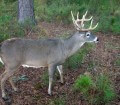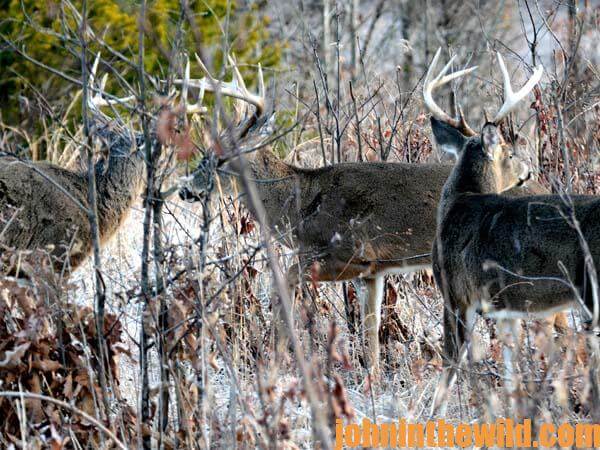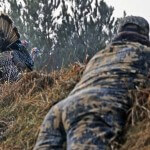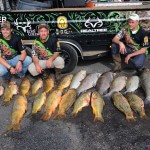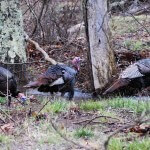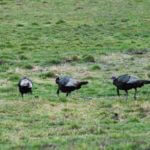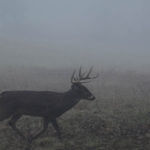John’s Note: Successful bass fishermen study bass and learn their patterns. Once you learn to identify and read buck sign, you can match your tactics to what the deer are actually doing – instead of what you hope they’re doing.
The first morning I attempted to pinpoint the pattern of the deer. I spotted one part that historically should have concentrated deer – where the corner of the green field and the corner of the clear-cut came together with only a 50-yard stretch of hardwoods separating the two. The 50 yards of hardwoods was a natural funnel. The deer had to pass through this funnel if they traveled between the clear-cut and the green field and went into the hardwood forest on either end of the funnel.
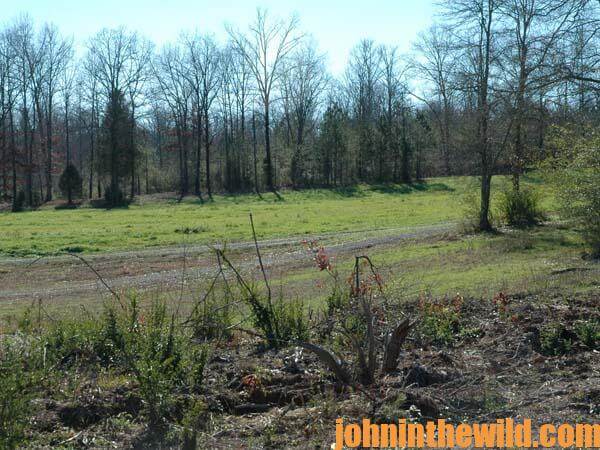 Although I felt this should be an ideal place to take a buck, I continued my investigation. I went down the woods road that the lodge’s guide had suggested and found the scrape line he had mentioned. There were about six or eight scrapes along the road. However, the scrapes had leaves in them, the ground wasn’t freshly pawed-up, and there was no strong smell of urine in these scrapes. From all indications, the scrapes had not been worked in the last day or two. I walked on down the road until I came to an open hardwood flat that was full of acorns. Little funnel shapes went all through the leaves where the deer had been using their noses to push the leaves back to find the sweet, juicy acorns underneath the forest clutter. Because the leaves that had been turned over were still wet, I assumed that the deer either had fed the night before or the morning before I had arrived.
Although I felt this should be an ideal place to take a buck, I continued my investigation. I went down the woods road that the lodge’s guide had suggested and found the scrape line he had mentioned. There were about six or eight scrapes along the road. However, the scrapes had leaves in them, the ground wasn’t freshly pawed-up, and there was no strong smell of urine in these scrapes. From all indications, the scrapes had not been worked in the last day or two. I walked on down the road until I came to an open hardwood flat that was full of acorns. Little funnel shapes went all through the leaves where the deer had been using their noses to push the leaves back to find the sweet, juicy acorns underneath the forest clutter. Because the leaves that had been turned over were still wet, I assumed that the deer either had fed the night before or the morning before I had arrived.
 That discovery gave me four possible regions to hunt deer – the green field which should be productive but because of the acorn crop might not be as productive a hunting area as it should have been; the funnel area where the two fields came closest together, and where the deer from both hardwood forests on either end of the funnel should travel through; the scrape line that apparently had been abandoned; and the acorn flat where I’d seen signs of deer feeding.
That discovery gave me four possible regions to hunt deer – the green field which should be productive but because of the acorn crop might not be as productive a hunting area as it should have been; the funnel area where the two fields came closest together, and where the deer from both hardwood forests on either end of the funnel should travel through; the scrape line that apparently had been abandoned; and the acorn flat where I’d seen signs of deer feeding.
When I returned to the lodge late that afternoon, I ranked the places as to which should be the best spot to take a stand the following morning in hopes of bagging a buck. I decided that the funnel area was my first choice, because the most deer should pass through this region going to the acorn flats on either end of the funnel. My second choice was the acorn flats where I had found signs of deer feeding in the leaves. I assumed that the deer were in fact coming in there to feed. My third choice was the green field. Even though the deer were feeding primarily on acorns, they had not completely abandoned the fields. The lush green of winter wheat and rye naturally lured deer like a magnet. I felt that the weakest area that I could hunt was the scrapes. I realized bucks would make many scrapes to which they never returned, and if there was a lot of hunting pressure in an area, they’d abandon a whole scrape line. Since I had seen no fresh activity along these scrapes, I decided that hunting over these signposts offered me the least chance of taking a deer.
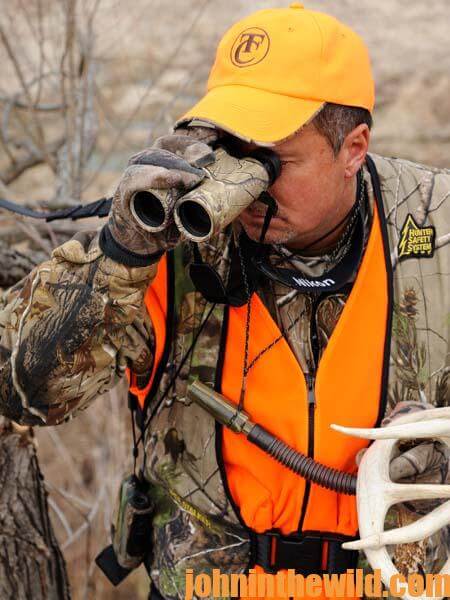 New Research Provided Clues:
New Research Provided Clues:
At the supper table that night, one of the men who had been hunting this lodge for several weeks mentioned a trophy buck that had been sighted in my area. “He’s a monster-sized buck with 22 – 26 inches between his beams and weighing well over 200 pounds,” the hunter informed me. “He has been seen most frequently crossing the creek at the end of the region where you’re concentrating your search. With this cold front that is moving in tonight, you may have a good chance of taking him in the morning.”
Because there was an either-sex season during the time I was hunting, and since I was only going to hunt this region for 2 days, I had decided that if I didn’t see a buck, I would take a doe. However, the chances of taking a trophy buck caused me to reorder my priorities. I would hunt the creek all day and not plan to hunt any of the other areas I already had scouted. I would rather take one chance at bagging a trophy than to see all the deer in the country.
To get John E. Phillips’ Kindle eBooks and print books on hunting deer, “How to Hunt and Take Big Buck Deer on Small Properties,” “How to Hunt Deer Up Close: With Bows, Rifles, Muzzleloaders and Crossbows,” “PhD Whitetails: How to Hunt and Take the Smartest Deer on Any Property,” “How to Take Monster Bucks,” “How to Hunt Deer Like a Pro,” and “Bowhunting Deer: Mossy Oak Pros Know Bucks and Bows,” or to prepare venison, “Deer & Fixings,” click here.
For information on making jerky from your deer to provide a protein-rich snack, you can download a free book from https://johninthewild.com/free-books.

